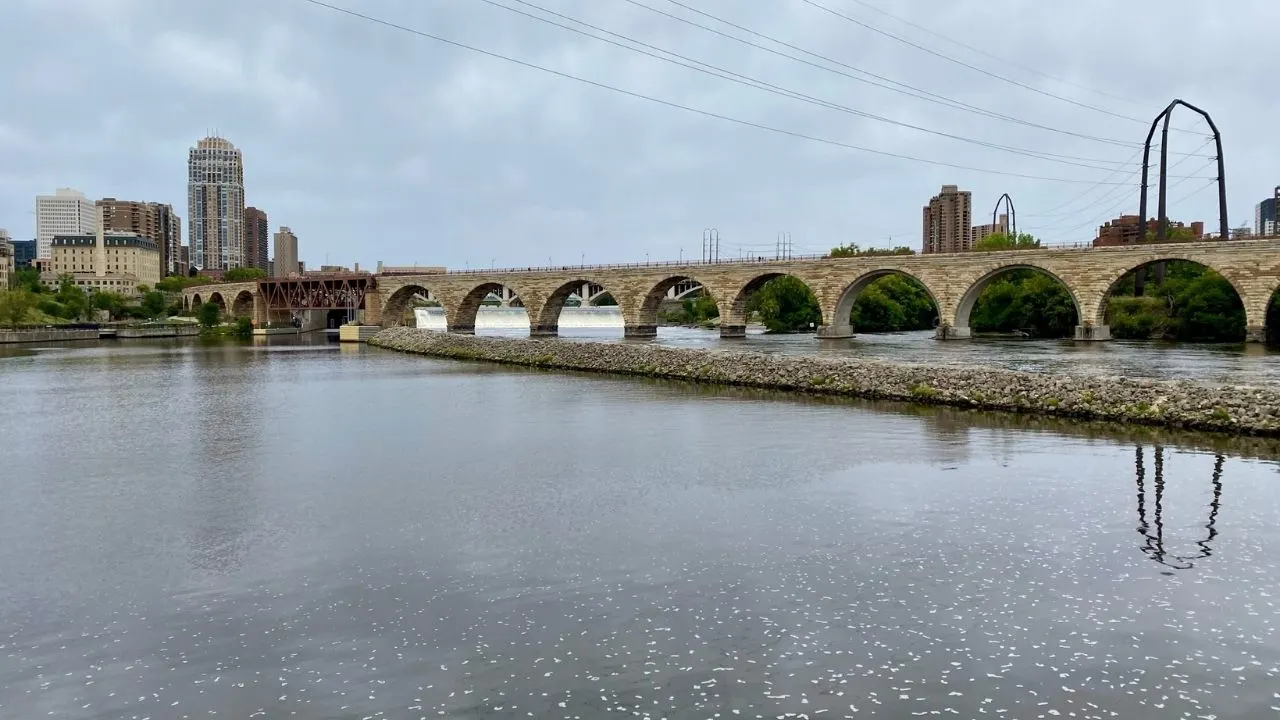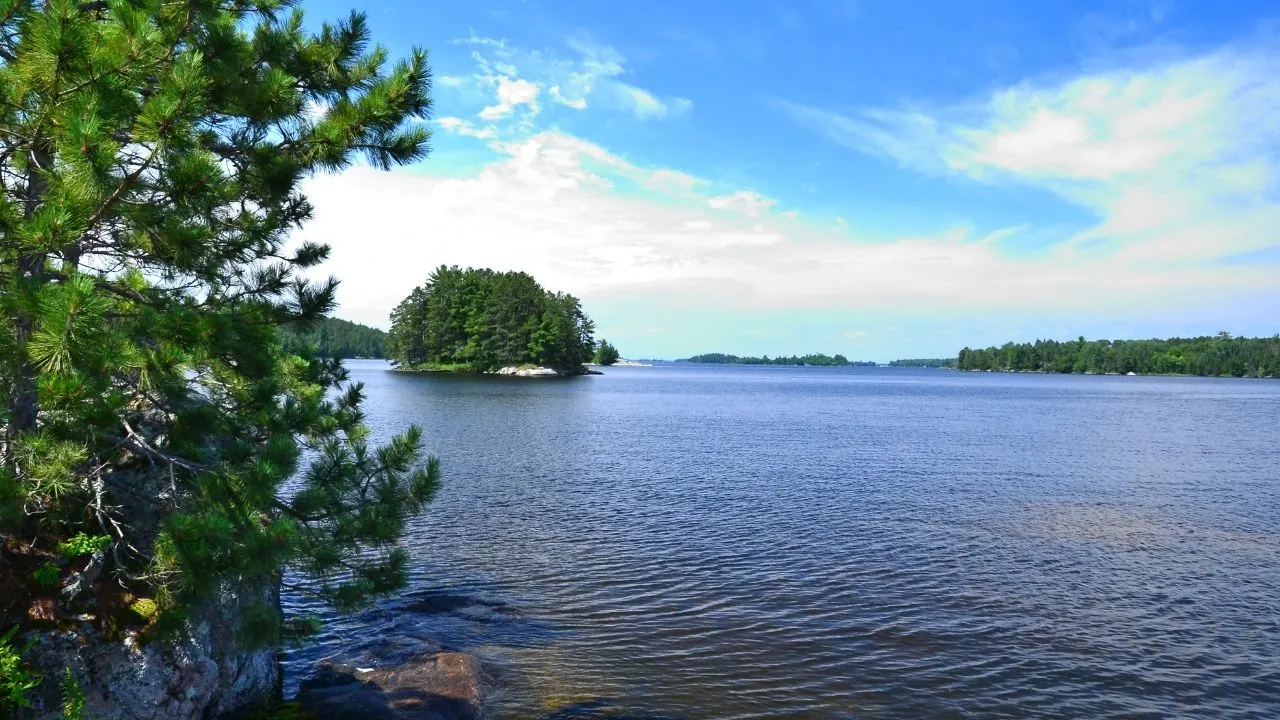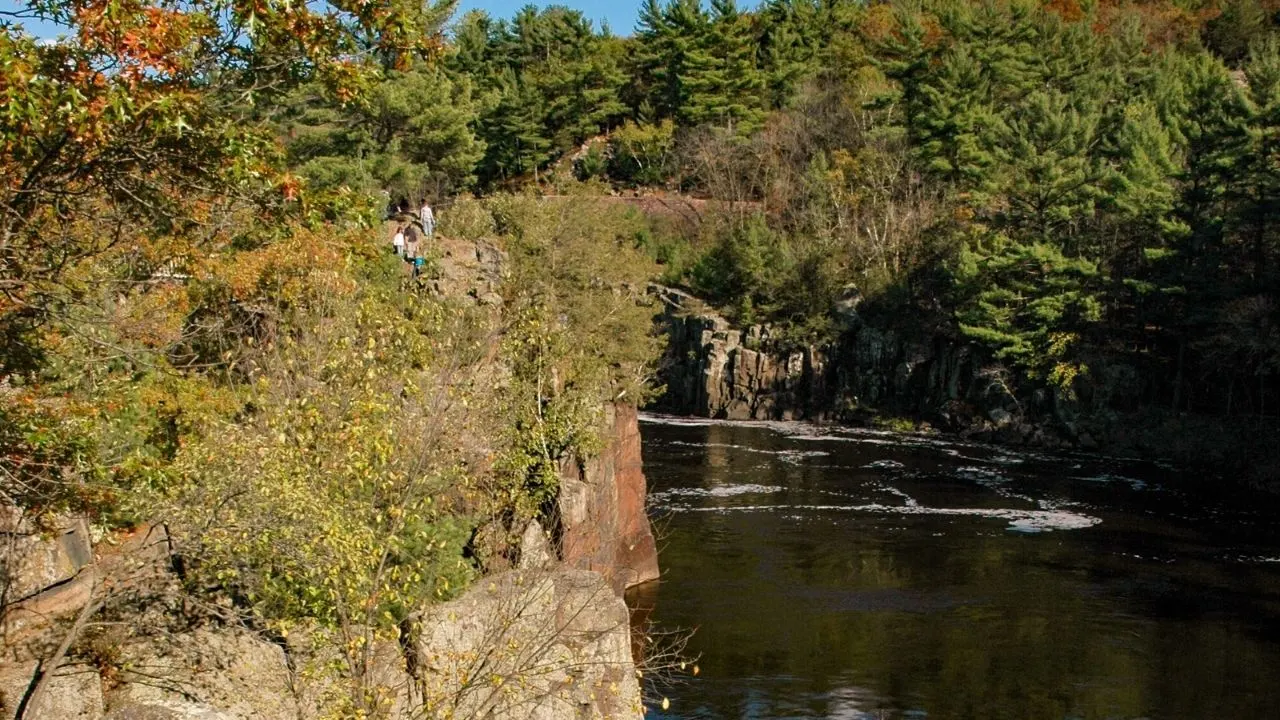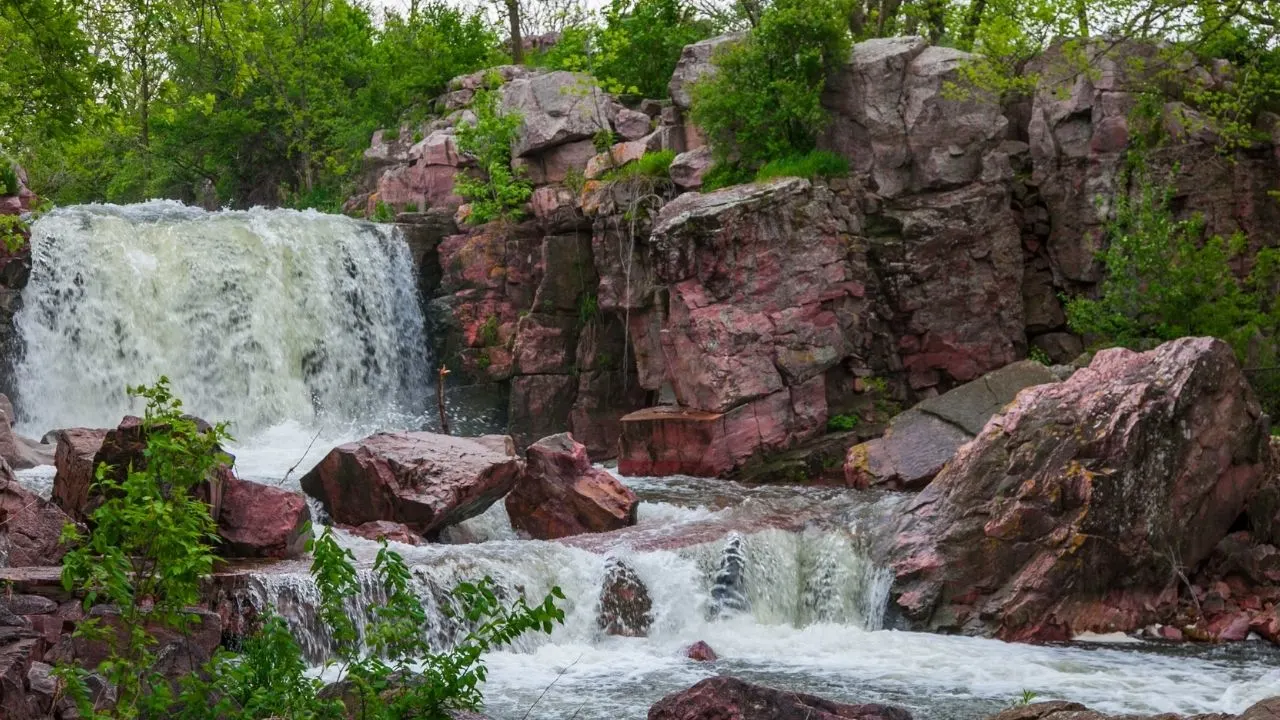The United States collectively owns millions of acres of protected land scattered throughout each state. These public lands include parks, forests, mountains, lakes, rivers, monuments, and historic sites.
Visitors to national parks enjoy plenty of recreation, from hiking and camping to picnicking and watersports. The parks are either free or charge a nominal entrance fee.
How Many National Parks are in Minnesota?
There are 6 national parks in Minnesota: the Voyageur National Park, Mississippi National River,fnationa and Recreation Area, North Country National Scenic Trail, Pipestone National Monument, Grand Portage National Monument, and St. Croix National Scenic Riverway.
Mississippi National River & Recreation Area

The Mississippi National River and Recreation Area is a 72-mile long river park along the Mississippi River. Covering 54,000 acres, it passes through the twin cities of St. Paul and Minneapolis.
The Mississippi River Visitors Center is the gateway to the park. Located in downtown St. Paul, you can find it inside the lobby of the Science Museum of Minnesota.
During the summer months, the Minneapolis area is served by the St. Anthony Falls Visitor Center.
The visitors center doesn’t charge admission, but tickets to the adjacent science museum must be purchased in advance. The Visitor Center offers various programming.
View videos about the park and the interactive exhibits that explain the area’s culture, history, and biology.
The Visitor Center is also a good way to become familiar with the outdoor opportunities at the park. These adventures include hiking, biking, fishing, observing wildlife, boating, canoeing.
The winter months offer skiing and snowshoeing.
Voyageurs National Park

Located about a five-hour drive north of the Twin Cities, Voyageurs National Park is comprised of over 40 percent water.
It’s named after French Canadian voyageurs who paddled the waterways for mink, beaver, and otter pelts during the 17th and 18th centuries.
Only accessible by boat, the interior features 240 houseboat sites and tent camping along the shores of four large lakes. There are 655 miles of shoreline and 500 islands within the park’s 200,000 or more acres.
Small lakes, dozens of them, lie along the Canadian border. The park has 3 visitors centers: Kabetogama Lake Visitor Center, Rainy Lake Visitor Center, and Ash River Visitor Center.
Visitors come to this unique park via motorboat, kayak, canoe, and sailboats for day trips and overnight camping. However, the park is best known for its floating luxury vacation homes.
Voyageurs National Park is open year-round. Enjoy water activities and hiking during the summer and frozen lakes and snowmobiling in winter.
Saint Croix National Scenic Riverway

The scenic St. The Croix and Namekagon rivers flow along the border of Wisconsin and Minnesota from Taylor Falls to Stillwater. It’s one of 8 waterways designated by the U.S. government as a National Wild and Scenic River.
The waterway is known for excellent smallmouth bass fishing together with other species. It’s also part of the best waterways in the nation for canoeing.
The Minneapolis section of the river flows from St. Croix State Park to Hastings, where it meets the mighty Mississippi. The area contains five pristine state parks and several regional and city parks.
Visitors can camp at primitive campsites along the shores. Heading north, the section of the river near Taylor Falls is particularly remote.
Canoes are more common than motorboats. In addition to boating and fishing, visitors will find self-guided hiking trails below the dam in Interstate National Park.
The St. Croix River Visitor Center and the Namekagon River Visitor Center are the 2 visitor centers within Saint Croix National Scenic Riverway.
Pipestone National Monument

The Pipestone National Monument is located 200 miles south of the Twin Cities, specifically in Pipestone City. Visitors can tour the active quarry pits (56 of them) here with the native tallgrass prairie quartzite rock formations, as well as hiking.
Winnewissa Falls, known for its colorful stones, is nearby. The name Pipestone comes from the soft stone Native Americans quarried to carve pipes for more than 3,000 years.
The site is still quarried by federally recognized tribes. The visitor center’s located at 36 Reservation Ave.
A museum in the visitor center chronicles the site’s history and culture and features demonstrations of creating pipestone goods by local crafters. Organized programs, including interpretive talks and guided walks, are held every summer.
North Country National Scenic Trail
Stretching more than 4,600 miles from Central Vermont to Central North Dakota, the North Country National Scenic Trail is the nation’s longest continuous hiking footpath. In Minnesota, parts of the trail can be hiked in several regions in the upper half of the state.
The trail weaves through state forests near backcountry camping. Day hikes can be taken by parking at access points.
In the northwest region, the 95-mile trail passes over the Minnesota/North Dakota state line. In North Central Minnesota, the trail is 196 miles long and passes over the Otter tail/Becker county line into Grand Rapids.
The Kekekabic Trail runs for 104 miles in the border region. In Northeastern Minnesota, the trail begins in Grand Rapids at Kekekabic Trail’s western terminus.
The Superior Hiking Trail begins in the border region and passes over the Minnesota/Wisconsin state line.
Grand Portage National Monument

A living history site, the Grand Portage National Monument overlooks Lake Superior. Park staff and local volunteers dress in period attire.
They reenact the working relationship between the Native Americans and the voyageurs of the French Canadian fur trade in the 1800s. The reenactments and other living history activities are held around the Historic Depot.
The depot is a long log building with a kitchen and a canoe warehouse. A voyageurs encampment and an Ojibwe village are adjacent to the Historic Depot.
The Heritage Center features exhibits, books, and films that explain the historical significance of the site. On August’s second week, celebrations are held.
The Grand Portage Band of Lake Superior Chippewa sponsors the Rendezvous Days Powwow and Grand Rendezvous Days.
Frequently Asked Questions about How Many National Parks are in Minnesota
When is the best time to visit Minnesota National Parks?
All of the parks and sites are open year-round. The parks are more crowded in summer, but the temperatures are pleasant, and rainfall is limited. In the fall, the parks are ablaze with color, and you can enjoy winter sports from late November-March.
Are pets allowed in Minnesota National Parks?
Dogs are welcome in all of the national parks as long their leash’s six feet or shorter. Only service animals are allowed in public buildings. Pets aren’t allowed in the Backcountry sites within the Kabetogama peninsula.
Conclusion
Minnesota National Parks offer a variety of outdoor adventures all year long.
All of the facilities are well-maintained, and plenty of affordable lodging is available.

Hey guys! It’s me, Marcel. I am the proud owner of carry-on-baggage.com. I am dealing with hand luggage related issues on a daily basis and I own several websites in this niche. Travelling is one of my biggest passions in life and I, therefore, happen to know a thing or two about hand luggage. I hope you all have a safe trip! Take care and thanks for the support. I really appreciate it.